I’ll be posting my photos from the Lake Titicaca in two parts, beginning with this blog featuring the Uros Islands and its people.
We disembarked from our train from Cusco in late afternoon and were escorted to our room at the nearby Libertador Hotel. We had a great view of the lake and I was able to get some nice sunrise shots before setting out on our first tour, to the Uros Islands.
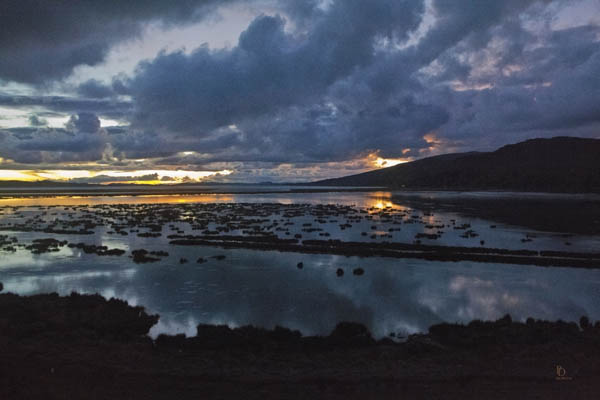
Uros are a pre-Incan people who live on forty-two self-fashioned floating islands in Lake Titicaca. They form three main groups: Uru-Chipayas,Uru-Muratosand the Uru-Uruitos.
The Uros use bundles of dried totora reeds to make reed boats (balsas mats), and to make the islands themselves. The Uros islands at 3810 meters above sea level are just five kilometers west from Puno port. Around 2,000 descendants of the Uros were counted in the 1997 census, although only a few hundred still live on and maintain the islands; most have moved to the mainland. The Uros also bury their dead on the mainland in special cemeteries.
The islets are made of totora reeds, which grow in the lake. The dense roots that the plants develop and interweave form a natural layer called Khili (about one to two meters thick) that support the islands. They are anchored with ropes attached to sticks driven into the bottom of the lake. The reeds at the bottoms of the islands rot away fairly quickly, so new reeds are added to the top constantly, about every three months. This is especially important in the rainy season when the reeds rot much faster. The islands last about thirty years.
We had a short boat trip to our first destination, a small island inhabited by four families.
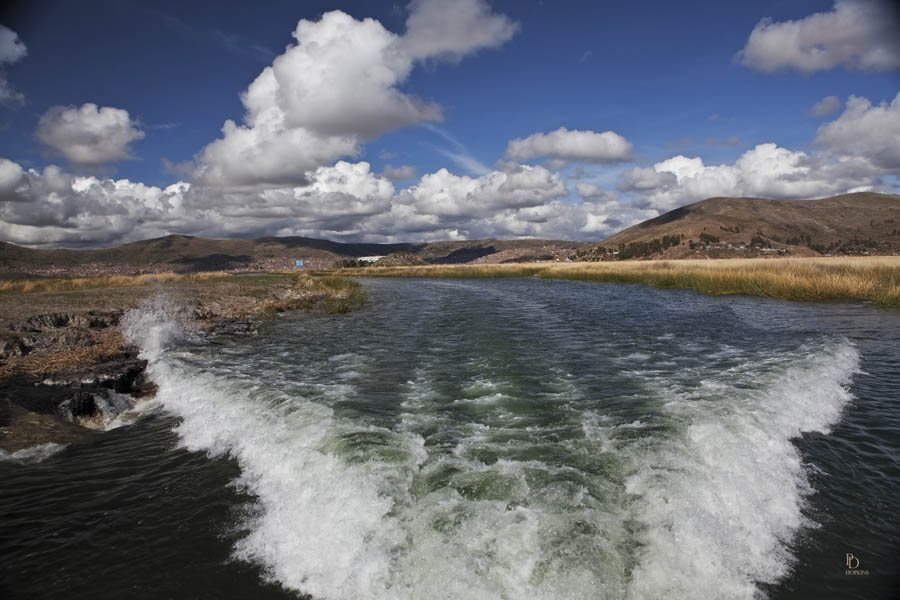
We were blessed with a beautiful day. The skies were very striking; vivid blue mottled with brilliant white, cumulus clouds. You can’t help but notice the skies in most of the photos taken at Lake Titicaca. Looking back, you can see our hotel (bright white) in the middle of the image.
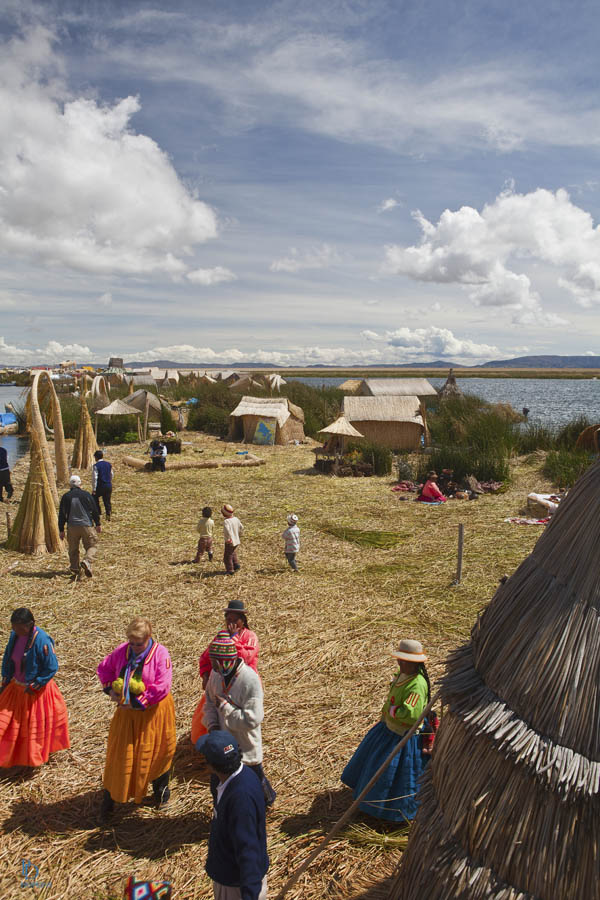
We were warmly greeted by the island’s residents upon our arrival. We were served Coca tea and given a briefing about life on the islands, including a description of how the islands are built and maintained, complete with visual aids. The next three photos were chosen to show the structure of the islands and the homes of its inhabitants, all constructed with totora reed.
Note the colourful clothing, all handmade.
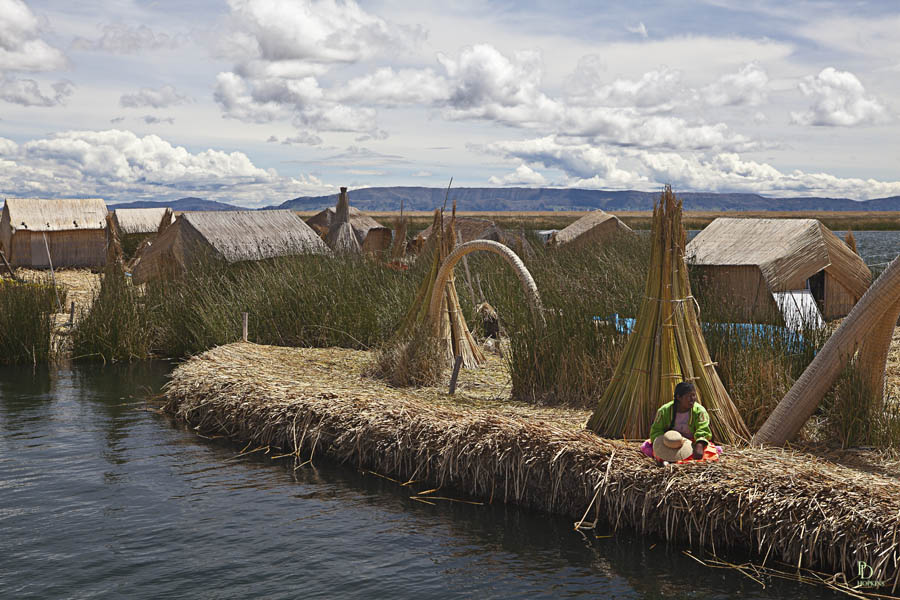
A good view of the island, illustrating how closely the Uros live to the water. We had the opportunity to measure the depth from this point, surprisingly over 20 metres. Children seemingly enjoy total freedom. We witnessed toddlers running freely over the island and school-aged children rowing boats, apparently unsupervised. I doubt today’s parents in our society would approve, but it did remind me of my own childhood and how things have changed for us since then.
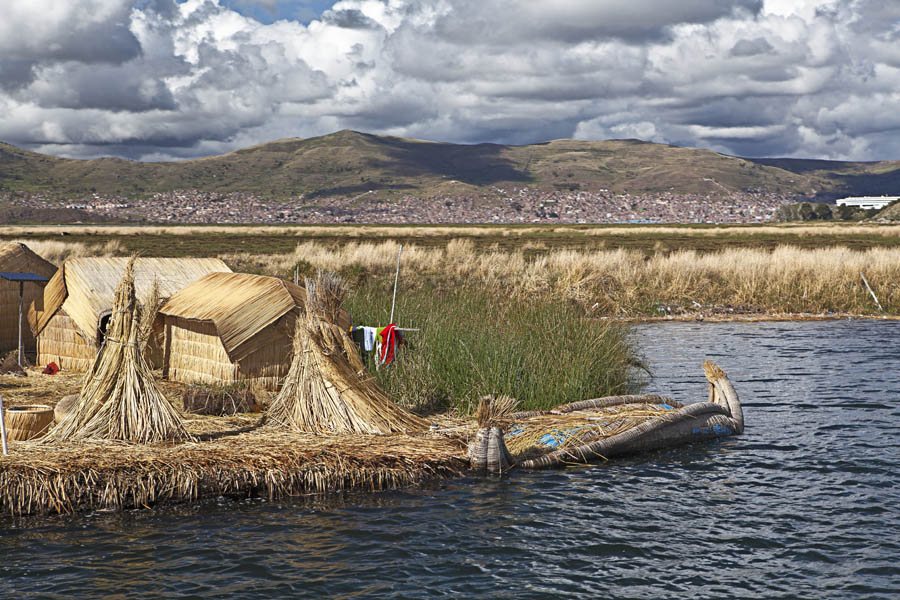
Another view of the island, showing the Peruvian City of Puno in the background, about 5 km distant.
The reed boats built by the Uros are impressive and we were given the privilege of a brief tour around the island.
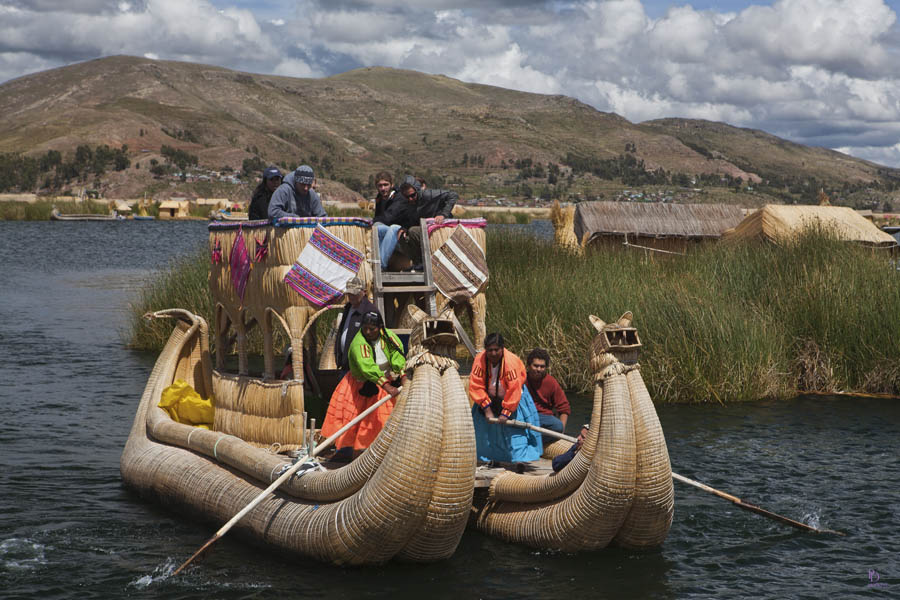
It was a windy morning and rowing these large boats proved to be quite a chore. I’m sure they do this all the time, so I wasn’t concerned about getting back to the island. There were a few moments when it did appear though, that it might take some time. Our boat was propelled by two men and as you can see, two women were rowing the boat behind us. I wouldn’t have bet against those women in a race!
We did some shopping and were bid a friendly farewell upon our departure. Our boat then took us out farther in the lake to Taquile Island, an entirely different indigenous settlement. More on that in the next blog.
